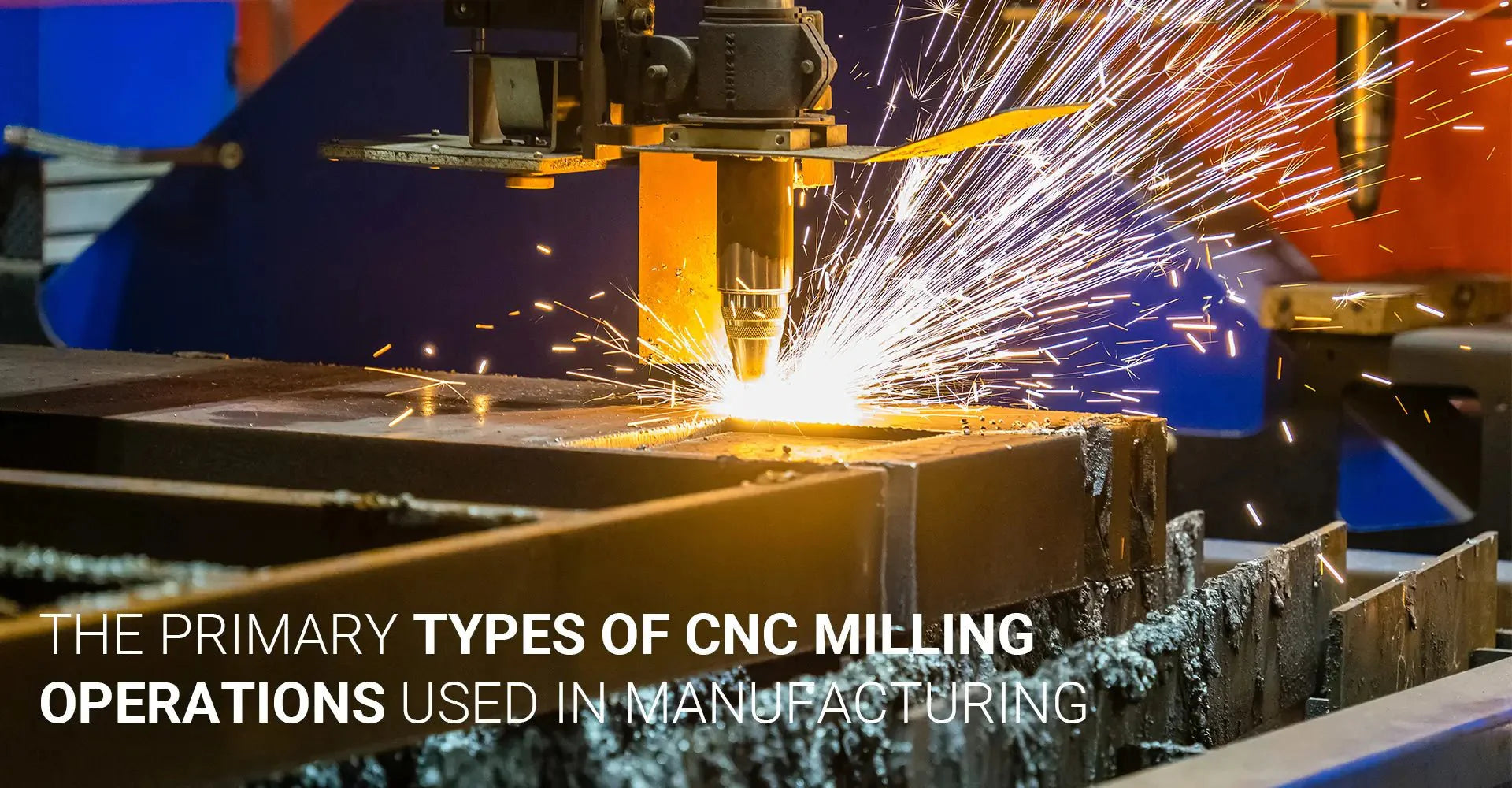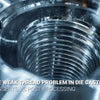What Are the Primary Types of CNC Milling Operations Used in Manufacturing Today?

What Are the Primary Types of CNC Milling Operations Used in Manufacturing Today?

CNC milling remains one of the most versatile and widely used machining processes across manufacturing industries worldwide. With the global CNC milling machines market valued at $84.86 billion in 2025 and projected to reach $116.88 billion by 2034, understanding the various types of milling operations is crucial for engineers, machinists, and project managers alike. Each milling technique serves specific purposes and offers unique advantages depending on the project requirements.
The five fundamental CNC milling operations—face, plain, angular, form, and gang milling—form the backbone of precision manufacturing. These operations are employed across automotive, aerospace, medical, and consumer goods industries, with Asia-Pacific currently leading market growth at a 3.74% CAGR due to rapid industrialization in China and India.
Whether you're an experienced machinist or new to CNC manufacturing, this comprehensive guide breaks down each type of milling operation, helps you select the right technique for your specific application, and explores real-world case studies that demonstrate their effectiveness in high-precision industries.
Table Of Content
- What Are the 5 Fundamental CNC Milling Operations Every Engineer Should Know?
- How Do CNC Milling Operations Drive Industrial Growth and Market Trends?
- How Do You Choose the Right CNC Milling Operation for Your Specific Project?
- What Advancements Are Emerging in Multi-Axis CNC Milling Technology?
What Are the 5 Fundamental CNC Milling Operations Every Engineer Should Know?
CNC milling operations vary significantly in their approach and application, with each type designed to address specific manufacturing challenges. The five core operations—face, plain, angular, form, and gang milling—represent the foundation of CNC machining capabilities that every manufacturing professional should understand thoroughly.
Face milling produces flat surfaces using perpendicular tool rotation, making it ideal for engine blocks and structural components. Plain milling cuts slots and pockets with horizontal tool alignment, while angular milling creates chamfers and grooves at precise angles such as 45° dovetails. Form milling shapes complex contours like gear teeth with specialized tools, and gang milling simultaneously uses multiple cutters for high-volume production environments.
Each operation requires specific tooling considerations and machine setup parameters. For instance, face milling typically achieves tolerances of ±0.005" using large-diameter cutters with multiple inserts, while form milling might utilize specialized profile cutters that match the desired contour exactly. Additionally, gang milling configurations can reduce production time by up to 40% in high-volume manufacturing scenarios by processing multiple features simultaneously. Understanding these operational nuances helps engineers maximize both precision and productivity across diverse applications.
How Do CNC Milling Operations Drive Industrial Growth and Market Trends?
The CNC milling market continues to expand across global regions, with distinctive growth patterns and adoption rates. Asia-Pacific leads this expansion with projected market value reaching $50.84 billion by 2034, primarily driven by China and India's manufacturing sectors embracing advanced milling technologies.
Market growth is strongly influenced by key industrial sectors, particularly automotive and aerospace. The automotive sector's demand for engine blocks, transmission housings, and precision components has created a sustained need for advanced milling capabilities. Similarly, aerospace manufacturing relies heavily on 5-axis milling operations for turbine blades and structural components that require exceptional tolerances, often reaching ±0.001".
Regional distinctions play a significant role in market development. While Asia-Pacific leads in growth rate, North America dominates innovation with substantial investment in 5-axis machines driving aerospace R&D. European manufacturers typically focus on precision and quality over production volume, particularly in medical device manufacturing. These regional specializations create distinct ecosystems where certain milling operations predominate based on local industry needs. For instance, Japanese manufacturers have pioneered ultra-precision milling techniques achieving mirror finishes through optimized parameters like 800-1200 SFM for aluminum components.
How Do You Choose the Right CNC Milling Operation for Your Specific Project?
Selecting the appropriate milling operation requires careful consideration of material properties, geometric complexity, tolerance requirements, and production volumes. This decision-making process significantly impacts both the quality of the finished product and the overall manufacturing efficiency.
Material considerations vary widely across milling applications. Aluminum and other metals can be milled at high speeds (800-1200 SFM) with relatively low tool wear, while hardened steels require slower speeds and specialized tooling. Geometric complexity often dictates the choice between 3-axis and 5-axis operations, with complex aerospace parts typically requiring 5-axis capabilities to achieve ±0.001" tolerances, albeit at higher operational costs.

Practical selection guidelines can be organized across multiple dimensions. Face milling excels for flat surfaces with moderate tolerance requirements (±0.005") at a relatively low cost, while 5-axis milling provides the capability to machine complex geometries with tight tolerances but at substantially higher investment levels. Production volume also influences operational choice—gang milling delivers efficiency for high-volume production, while form milling might be more appropriate for specialized, lower-volume components. Furthermore, the finish requirements often determine the final milling pass parameters, with mirror finishes demanding fine finishing tools such as carbide end mills and carefully optimized cutting parameters.
What Advancements Are Emerging in Multi-Axis CNC Milling Technology?
Multi-axis CNC milling technology continues to evolve rapidly, with 4-axis and 5-axis capabilities transforming manufacturing possibilities. These advanced systems enable complex geometries to be machined in single setups, dramatically reducing production time and improving precision.
5-axis machines have demonstrated the ability to reduce setups by up to 60% for complex geometries, allowing components that previously required multiple operations to be completed in a single process. Simultaneously, AI integration in newer milling systems provides predictive tool wear monitoring that has been shown to cut downtime by approximately 20%, addressing one of the most significant challenges in production environments.

The practical applications of these advancements span numerous industries. In medical device manufacturing, 5-axis milling enables the production of complex titanium implants with organic geometries that were previously impossible to machine efficiently. Similarly, aerospace manufacturers utilize advanced milling capabilities to create monolithic structural components that replace multi-part assemblies, reducing weight while improving strength. Additionally, the integration of in-process measurement systems with multi-axis milling operations allows real-time quality control, ensuring that complex parts meet exacting specifications without requiring separate inspection steps. These technological improvements continue to expand the boundaries of what's possible in precision manufacturing
Conclusion
CNC milling operations form the foundation of modern manufacturing across numerous industries. From the fundamental techniques of face, plain, angular, form, and gang milling to advanced multi-axis capabilities, these processes enable the creation of components with incredible precision and complexity. As the global market continues to grow—reaching $116.88 billion by 2034—understanding the specific applications, limitations, and advantages of each milling operation becomes increasingly valuable. By selecting the appropriate technique based on material properties, geometric requirements, and production volumes, manufacturers can optimize both quality and efficiency. Furthermore, ongoing technological advancements in multi-axis capabilities and AI integration continue to expand the possibilities of what can be achieved through CNC milling processes.
[External links recommendation]
[Multi-Axis CNC Milling](https://www.americanmicroinc.com/resources/advantages-multi-axis-cnc-machining/)[^1]
[Types of CNC milling operations](https://www.basilius.com/blog/types-of-cnc-milling-machines/)[^2]
[face milling](https://waykenrm.com/blogs/what-is-face-milling/)[^3]
[Plain Milling](https://waykenrm.com/blogs/what-is-plain-milling/)[^4]
[Gang Milling](https://www.rtprototype.com/what-is-gang-milling/)[^5]
[Form Milling](https://winndeavor.com/everything-you-need-to-know-about-form-milling/)[^6]
---
[^1]: Explore the advantages of Multi-Axis CNC Milling to understand how it can enhance precision and efficiency in manufacturing.
[^2]: Learn about the various types of CNC milling operations to choose the right one for your project needs.
[^3]: Discover the process of face milling and its applications in CNC machining for better project outcomes.
[^4]: Explore this link to understand the techniques and applications of Plain Milling in machining processes.
[^5]: Discover the benefits and uses of Gang Milling in manufacturing to enhance your machining knowledge.
[^6]: Learn about Form Milling and its advantages to improve your understanding of specialized milling techniques.
-
Posted in
CNC milling





